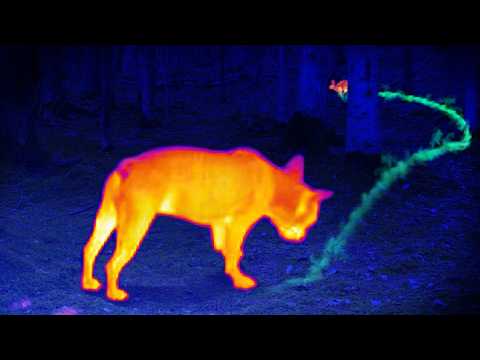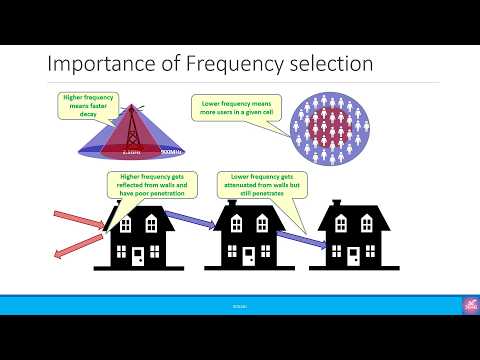This fake dog nose made chemical sensors 18x better

- In this US Government lab, they study air flow to solve crimes, using mirrors, lights and lasers, they can illuminate the tiniest differences in air temperature and density, and track how drug powder settles in the rooms of a house, determine which person fired a gun, or spot particles escaping from a sealed package. A portion of this video was sponsored by Caseta by Lutron. Our best tool for picking up trace substances has been the same for centuries. - So it turns out nature has already provided us with the best chemical detector, and that is the dog's nose.
So this is Bubbles. She's a 3D-printed, anatomically-correct model of a female Labrador Retriever. We tried to get one of the police canines to come in here and get in front of the mirror, but dogs get hungry and cranky very quickly. And we got about four seconds of good footage, and I'm like, okay, we can do better than this. - Dogs can sniff very faint scents and from far away, but they don't do it just by breathing in.
What they do is breathe out and in rapidly around five times a second. (air whizzing) - What I want you to notice is this pulsating motion by the, we'll call it the doggy treat, right? This is our doggy treat. If you notice this pulsating motion.
- And what allows them to detect scents from far away is the rapid and turbulent exhale. - When the dog exhales, there's a turbulent air jet that comes out of each nostril, just like when you and I exhale. If you put your hand under here and just exhale outta your nose, those are two turbulent air jets coming out of the dog's nose. But when the dog is down on the ground, those air jets are vectored back towards its rear. The dog is pushing air back, and when by doing that, it's pulling air from ahead of it.
So imagine me, I'm blowing air this way, and when I do that, I actually reach out and pull air towards me. The dog reverses flow inhales, right? Gets a new sample, analyzes it with an amazing chemical detector upstairs, right? Its olfactory region, and does it at five times a second. On average, a dog when it's sniffing for something, five times a second repetitive sine wave. So that's what makes the dog this incredible sampling system. It kind of didn't matter the breed of dog.
Somehow their evolution allowed them to figure out, okay, one over five seconds is what I need before I take the next puff or the next inhale. If the dog had infinite lung capacity, and it just inhaled constantly, it has a very limited reach. But because of this in and out bellows effect, its reach goes up by roughly a factor of 18.
We have a number of commercially available vapor detectors, okay? Because some of these are really good for various explosives and drugs, some are very good for chemical and biological hazards, but they all just inhale air. What we did is we designed and printed what are essentially nostrils that plug onto this thing and make it sniff like a dog. And then by doing a set of controlled experiments, by moving your vapor source farther and farther, we were able to, on average, improve the detection capabilities of these by roughly a factor of 16 to 18. - Whoa1 - Just by making them sniff like a real dog.
- We're able to see this dog breath using Schlieren imaging. I've actually done a video on this before. - This is an automotive headlamp. After that, I have a condenser lens, so it takes this light and focuses it down to a point. So from there our light diverges, and it comes up and it fills our mirror.
Think of these light beams as arrows, okay? And there are a bunch of arrows that are coming up, they're straight as can be, but when they pass something of a different refractive index, which could be the heat from my hand, or a different density, which could be a gas of a different density, those light rays, they shift a little bit, they shift very slightly, okay? They refract, they bend. Then they all come back. So we're coming back here, and right here we have a two-way mirror. So light can travel through the mirror this way, but when it comes back, it turns 90 degrees.
And if you look right here, I have a razor blade. And what this is doing, it is positioned exactly at the focal point of that mirror. I have that razor blade edge, it's able to move in and out of the focal plane. And so what I do is I cut off those arrows of light, those beams of light that shifted a little bit, and I cut 'em off, I block 'em. As I move the knife edge out, so I'm not cutting off any light right now, so you basically have a really expensive mirror, it's not doing anything for you.
But as I take this razor blade, and push it in, you start to see, you know, turbulence in the air, and as I take it more and more, yeah, there you go, get your hand in there. - Whoa, your Schlieren setup is so much better than mine. - So take a look at this.
So this is in a Shadowgraph system. - Wow. - So it's Schlieren's little brother, okay? It's not a Schlieren system, but it's very close, a Shadowgraph. Shadowgraph is not as sensitive, okay? But it's easier to build. Look, we have a flashlight and a white wall, and we're already seeing a shadowgraph there.
- So why does this work? - What's happening is we have light, it's not as focused as I would like, but the more focus, the better. The light's coming up this way, it's passing through a hot flame of a different density and refractive index, and we're basically casting a shadow of that plume on the wall, which is why it's called a Shadowgraph. - These can still be used to visualize flow patterns in detail. Just by looking at the footage of guns fired in a Shadowgraph, we can actually figure out the speed of the bullet and how loud the bang was. - And there's our bullet whizzing off, it is supersonic because it has a very small bow shock. You see it there? - Yep. - Very, very small.
So it's, you know, roughly what Mach 1.05 maybe, just above sonic. Compare that to the infamous AK47 assault rifle. There's two things that we can qualitatively observe here.
One is, if you compare these side to side, the Smith & Wesson versus the AK47, the darkness of this line is different. This is a quieter firearm, it's not as loud, the report is not as loud. - Because it's less pronounced. - [Matt] It's less pronounced, yep. - The hot gases released when the gun is fired expand outwards, creating a shockwave.
Across this shock, the pressure, temperature, and density of the air changes rapidly. And the bigger that change, the darker this shows up in the Shadowgraph. So you can get a sense of how loud it is by how dark that shock appears. - And then here we see our bullet whizzing off at about, oh gosh, Mach two, - two and a half, - It's like two, three degrees, right? - You could actually measure that and calculate the Mach number. - Any object moving through air creates pressure waves that travel out at the speed of sound. Since this bullet is moving faster than the speed of sound, the pressure waves it creates all get compressed together into a single conical shock wave.
It's like a tiny sonic boom. And you can use this to determine the speed of the bullet. The sine of the angle is the ratio of the speed of sound to the speed of the object. There is a different way to visualize flow, which is with a laser sheet.
It illuminates fine particles. So we can see the plumes of gun powder residue created when a gun is fired. - We call this laser light sheet. And the reason is, okay, so now our light's there, I can barely see it because I have laser safety glasses on. - Yep. I can only see it in the camera. - Yeah, so what's happening here is we have a laser beam, and we send it, we steer it through a cylindrical glass rod.
All it is, is a piece of glass that's a cylinder. And what that does is it spreads that beam into a two-dimensional wall of laser light. Okay? And so the way this works is whenever particles or theatrical fog cross through this sheet, they light up because of the laser. There's a lot of effort now going into understanding gunshot residue. So gunshot residue is the kind of burned and unburned propellant that occurs whenever a firearm is discharged, right? So what we're looking at here is using laser lights and high speed cameras, is we're looking at the plume of gunshot residue that's generated after a firing event. This is looking at ventilation inside an actual gun range.
But look at all this. This is all gunshot residue that you can't see with the naked eye, but is there, so you can imagine if you're inside a home, this is five shots in a few seconds. Enormous amounts of material.
A lot of this is landing on the hands of the shooter, but unfortunately a lot of it is also being dispersed into the local environment. - It goes way farther than I expected. - So the question is, can we differentiate between something that's actually been done by the shooter and something, say, by a bystander that walked in two minutes later? So that this is what we're actively trying to pursue right now. So these are tools and techniques that we use here at NIST that are qualitative or sometimes semi-quantitative, but they really help illustrate what's happening. And then the public security part of this, deals with trace contraband detection.
We're all generating heat, right? So we all have this warm plume of air. You wanna see it? I'll show you. It's kind of crazy. So you seeing it there? So that is called the human thermal plume. And guess what's in that plume? - Water? - Parts of me. Skin cells. - No way. - Yeah. So we're shedding skin cells at a pretty creepy rate.
I forget what the number is, but it's a lot. Thousands an hour-ish. So we are shedding these skin cells constantly, and it's actually not necessarily a bad thing from a trace detection standpoint.
- What do you mean? - Well, whenever we are talking about trace detection, whether it's drugs or explosives, it's all based on this fundamental principle, it's called Locard's Exchange Principle. It's in forensic science. It's that every contact leaves a trace.
And what that means is when you're done in this lab, there will be parts of you left behind in this lab, whether you like it or not, right? 'Cause we're all shedding skin cells and taking things, and taking stuff with us. So if I'm a bomb maker, if I'm involved in manufacturing, you know, illegal fentanyl in my basement, I am ultimately contaminating myself with the bulk material. And this contamination comes in the form of very, very small particles. And the chemical detection systems that we have available now are so sensitive, they can detect a single particle of say, an explosive residue. Imagine you have a bomb in a package, right? And you're at some kind of screening facility, right? You're at a facility that maybe is screening things coming in from overseas, maybe you've got a sniffer, you've got a commercially available vapor detector, and you've got 10 seconds to sample this package.
Where do you point your device, right? These are the kinds of experiments that help us understand where you should point your device. We call this burping. We're burping the package. So we have some acetone in here. So wherever you burp it, where you squeeze it, you have acetone vapor coming out of all the gaps, right? So they're coming out in the gaps, so that gap gives you the highest chance of actually detecting what's inside, right? You don't want to go over here where there's no gaps. You don't want to go up there where there's no gap.
You want to go in these corners here, where stuff is actually kind of permeating through and outside of the box. This is some recent work we're doing. We are basically simulating illicit drug manufacturing. So here's some talc powder, right? No big deal. I'm gonna shake it up a little bit.
When I open this and squeeze, I can't see anything, but are you seeing anything in the camera? - Yes. - So again, to the naked eye, we'd never be able to see this. But because the laser is doing the illuminating for us, we're able to see this. Let's do a little experiment where I am taking illegal substance A and pouring it into substance B.
First thing I'll do, just watch when I take the lid off of this. (tense music) Take it from here. - There is a little bit coming off, yeah. - A little bit? - Oh yeah. It's still going. - So just imagine, you're in a basement, and you're building stuff like this, and you don't realize that there's all this contamination spreading and landing on other surfaces in your room.
And I can't talk about the numbers, but they're pretty startling. - Like there's a lot. - There's a lot. - It spreads everywhere.
- There's a lot, yeah. (tense music) This thing's going to be full of smoke in here. You ready? - Yep. (tense music) What I really love about the laser sheet technique is it allows you to visualize the turbulence that's in the air. - [Matt] So this is a way we can see how the air flow in the room is actually being tracked.
- Oh, that's nice. - [Matt] Yep. If you look at the graph and the top right, that is actually real-time counts of the particles that are being generated around this person. So that plot represents basically inhalation exposure of the materials that he's working with.
That's crazy, if you think about, 'cause if that's fentanyl, and that person doesn't have a mask on, they're gone. We add fluorescent powder to this kind of stuff, so we can actually visualize where the contamination goes. The other cool part of this is that we can use a quantitative method of sampling surfaces in the house. We basically use swabbing.
And it's the same idea when you go to the airport. Have you ever gone there and they ask for your hands? - Yeah. - Right? And they take a little swab and they wipe your hands. What they're doing is they're looking for these trace amounts of explosive particles that could be on you if you were involved in the manufacture of an explosive device.
But that's a drone. That's looking at a drone. And the question is, 'cause you know, you get this cool prop wash, and these four propellers that are are all interacting with each other. So the question is, can we use the fluid dynamics of a drone to do the sampling for us? And here's what I mean by that. If there is a suspected, you know, manufacturing facility of something, say it's a methamphetamine or fentanyl, you know, it's very, very expensive to get Hazmat crews involved. Have them come, they have to gown up, they have to go in, to a potential really dangerous situation.
What if we had a drone? We just flew the drone in, right? It buzzes around and it's got some special kind of collector on the belly of the drone and we're using the prop wash of the drone to stir up particles off of a surface, and then somehow inhale them, collect them. The drone comes back to base, you run your chemical analysis, you say, okay, the house is clean, or no, we found stuff. Okay, now it's time to pull out the Hazmat crew. You know? So the big-picture idea that I want you to keep in the back of your head the whole time is this idea of public safety and security.
So that's really what happens in this lab. But underneath that kind of umbrella term, think mask research. So when the Covid pandemic hit, we kind of switched gears in here to try to address some of the issues related to masks. This thing will actually breathe as a human does, that human happens to be me.
So I measured my own kind of breathing rate, and then built a system, kinda engineered a pneumatic system that replicates that, but it also has a fog machine, a fog generator. So this thing basically just looks like it took a drag off of a cigarette and exhaled. What's kind of cool with this is it looks like there's nothing coming through, right? But there is millions and millions of particles trying to make it through. Some do, 'cause it's not 100%. So I wrote an image-processing code.
So you take this information, you plug it into a code, and it analyzes, based on pixels and it's counting white pixels, and sure enough, if you use an N95, you put an N95 on here, you run it through an image processing code, guess what percentage of pixels light up white? - 5%? - 5%. - Okay. - Now I just want you to breathe naturally. So when you're inhaling, it gets dark.
And when you're exhaling, it gets lighter, because the air is being warmed by your lungs and then coming back out. - Like it's interesting how fast you can see the effect of the breathing in, like just makes it go dark so quickly. - But that shows me that, like this now doesn't change color at all. So this is being used to seal versus filter. I notice the color change is a lot more dramatic.
- Yeah. - With this, you know, it was in and out. - I feel like that's a thinner mask, right? - [Matt] Yeah. So the heat transfer-through, it is gonna be greater. - I feel like there's a lot coming out over the top. - There is, yeah,
there's a lot. If you just breathe naturally, you'll see a lot coming out there. - The thing with masks, right, is like, initially they were like, masks don't work, don't wear a mask. And then they were like, masks do work, like, and wear a cloth mask, and then they were like, no, no cloth masks don't work, like, I don't know, there was a lot of confusion around masks.
- What we learned early on was that the communication of, you know, mask effectiveness could have been improved, right? And so that's kind of why I did what we did with the Schlieren. The truth is, the average American is not gonna sit down and read a scientific journal article. But they will sit down and watch a 90-second video of me coughing with a mask on and off.
And that's what we did. It's kind of a unique relationship we have with other federal agencies here. So you have a three-letter agency that has a specific need for something, right? In the security arena. What they'll often do is they'll come here to NIST, and they'll say, hey, we're really interested in sampling people's shoes for explosives for whatever reason, right? So what we do here, and in this lab in particular, is we figure out what are some good ways to sample shoes for explosives? What are some not so good ways, right? What do the measurements need to look like to evaluate a shoe-sampling system that doesn't even exist yet? And then what do the standards need to look like that support those measurements, right? And so we figure all this stuff out in the lab, package it up nice and neat, give it back to the sponsoring agency, and then they take it to industry. And industry already has a leg up on the development of these kinds of systems, because we did a lot of the heavy lifting here in the lab. Because with the success of, you know, doing the Covid-related visualization, we're realizing now that the application space for this kind of technology is huge.
Indoor air quality. You can imagine a bigger mirror where we could look at two people interacting with each other, and what that transfer looks like from one person to the other. The take-home message is flow visualization is a critical tool that we use here at NIST to really help understand what's happening, right? It's one thing to do quantitative analysis on various surfaces, but now we can see, we can actually see what's happening, and where these particles are generated. - Thanks to Lutron for sponsoring this portion of this video. Perfect lighting isn't just important for visualizing air flow, it's also essential for making your house feel welcoming, cozy and safe.
And with the sponsor of this video, Caseta by Lutron, you can easily set up your own perfect lighting. You know, Caseta provides premium smart lighting control, including switches, remotes and plug-in smart dimmers, which allow you to customize your home lighting from anywhere in the house. What I love about smart switches is that one switch can control many regular bulbs. So you can effectively make all your bulbs smart just by replacing the switch. And installation is easy. First, make sure you turn off power to the switch, and then disconnect the existing wires, and connect them to Caseta's Smart Switch.
If you need any help, they're just a click or a call away. And then with the Smart Hub, you can turn your lights on and off just using your phone. Or you can use another device, like Alexa or Google Assistant.
Caseta works with more smart home brands than any other smart lighting control system. Plus their switches don't rely on Wi-Fi, so they always stay connected, and you always have control over your lights. I personally like setting timers in my house, for example the lights in my office turn on by themselves in the evening. And this gives me peace of mind that my family will always come home to a well-lit house. And the best part of it all is if I'm already in bed, I can just check which lights are still on, and turn them off without having to run around the house. Learn more about Caseta at casetawireless.com/veritasium.
Thanks to Lutron for sponsoring that part of my video.
2022-12-25 17:08


